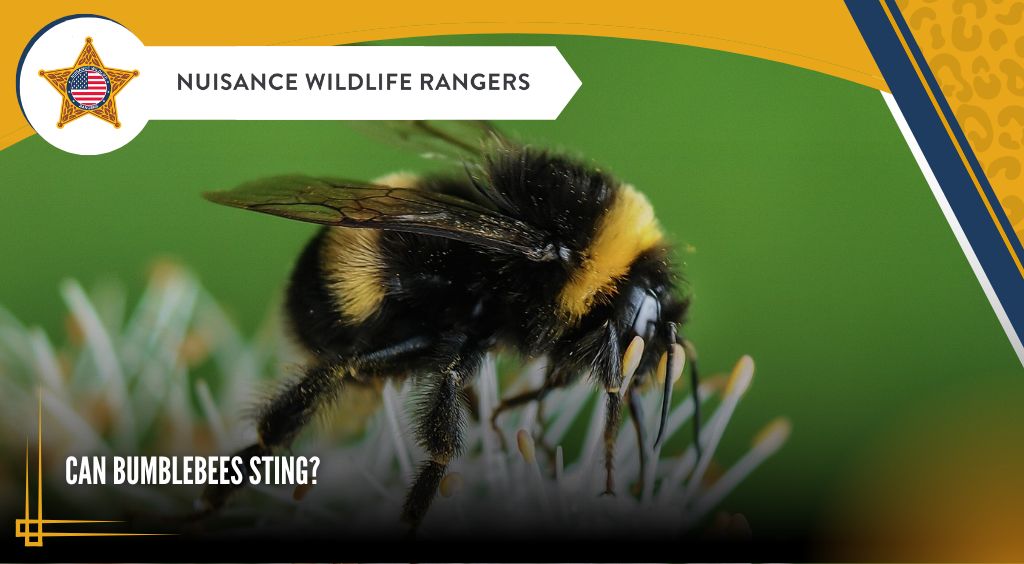 There are over 20,000 bee species in the world. However, each type of species is categorized into seven families: Apidae, Andrenidae, Colletidae, Melittidae, and Halectidae.
There are over 20,000 bee species in the world. However, each type of species is categorized into seven families: Apidae, Andrenidae, Colletidae, Melittidae, and Halectidae.
Bumblebees belong to the Apidae class of bees, along with carpenter bees, honey bees, cuckoo bees, digger bees, and stingless bees.
Bumblebees are a type of bee that is social in nature. They are the only bees that form colonies based around a single queen. Bumblebees are incredibly important to our ecosystem, as they pollinate plants to ensure the plant can produce flowers and seeds.
If you see bumblebees in your yard, you might get nervous about being stung. Most bumblebees will leave you alone, as they are mainly focused on pollinating. That said, female bumblebees are capable of stinging you if they feel threatened or disturbed.
In this article, you will learn:
- Whether bumblebees have stingers
- If bumblebees can sting
- Why bumblebees would sting a human
- How to identify a bumblebee sting and an allergic reaction
- How to avoid getting stung by bumblebees
Do Bumblebees Have Stingers?
Not all bumblebees have stingers. Only the female workers and queens have stingers because they possess an ovipositor. The male bumblebee workers do not have stingers and are referred to as drones.
Ovipositors are egg-laying apparatuses that have evolved to include a stinger. This is because female bees have taken over the role of protecting the colony from harm. The sole purpose of male bumblebees is to reproduce with the females, which is why they lack a stinger.
Why Would a Bumblebee Sting?
The only reason a female bumblebee would sting is if they feel threatened. If you are simply standing near a bumblebee or walking by, they will likely leave you alone. However, if you begin swatting at the bee, they might become defensive and sting you.
When bumblebees sting, they inject venom through a smooth and barbless stinger. Because the stinger is barbless, the female bumblebee can retract it without losing it or being harmed in the process. Unfortunately, this also allows repeated stinging in quick succession.
Bumblebee venom can lead to a general allergic reaction among humans. You might experience a localized reaction or adverse effects if you have a severe allergy. Signs of an allergy include dizziness, excessive sweating, and cold shivers.
Since bumblebees rarely sting, you should not feel nervous around them. The only time for concern is if you have a known allergy or are messing with their hive.
How to Identify a Bumblebee Sting
Bumblebees inject venom into humans through a stinger. Most people only experience short-lived reactions, however, they can be incredibly painful. If you are allergic to bumblebee venom, you might have a more severe reaction.
A typical bumblebee sting (if you are not allergic) will produce itching, redness, and swelling at the site. Because their stingers are not barbed, there will not be a stinger left behind in the skin. The reaction to the sting usually only lasts a couple of hours, however, you might feel localized effects for a day or two.
If you have a normal reaction to a bumblebee sting, all you should do is use an anti-itch ointment to treat it. You could also take anti-inflammatory medication to deal with swelling.
Understanding Allergic Reactions to Bumblebee Stings
If you are allergic to bumblebees, you might have a more severe reaction. There are 4 levels of allergic reactions associated with bumblebees. All of them should be treated by a medical professional.
The levels of severity associated with allergic reactions to bumblebee stings include:
- Level 1 – causes generalized itching, swelling, and redness throughout the body
- Level 2 – includes symptoms of level 1 with gastrointestinal issues like vomiting and diarrhea
- Level 3 – includes symptoms of levels 1 and 2 accompanied by difficulty breathing
- Level 4 – includes symptoms of levels 1, 2, and 3 with severe symptoms like heart palpitations, fainting, and anaphylactic shock.
You should always treat an allergic reaction to bumblebee stings with the support of a medical professional. If you experience a level 3 or 4 reaction, you should contact emergency medical services for assistance, as these symptoms could be life-threatening.
Ways to Avoid Getting Stung By a Bumblebee
Bumblebee stings can range from painful to life-threatening depending on whether you are allergic to them. While bumblebees do not sting often, it is important to be aware of how to prevent them.
To prevent bumblebee stings, you should:
- Remain calm while near bumblebees. Avoid swinging your arms, swatting, or bumping into their nest.
- Move calmly and slowly while near bumblebees or nests. Retreat from the location.
- If bumblebees begin stinging you, brush them off instead of crushing them. Crushing bumblebees could push their stingers farther into your skin.
- Run away from the area if you are being stung while covering your head and face.
- Contact a professional bee removal service once you are safe, as they can relocate the bee hive away from your home.
Bumblebees are important to our environment, so you should avoid killing them. If you notice a hive on your property, contact a company like Nuisance Wildlife Rangers. We will safely remove the nest from your property and relocate it to an area away from the public where the bees can do their jobs without causing harm.
Get Connected to a Professional Bee Removal Service
If you have bumblebees on your property, it is best to call a professional bee removal service. At Nuisance Wildlife Rangers, we will relocate the bumblebees without harming them, keeping you and the environment safe at the same time.
Contact us today for more information on how we can help you with a bumblebee infestation.
